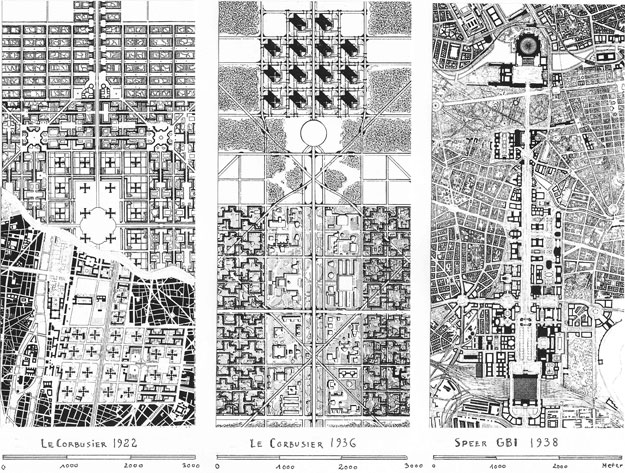 |
| Image courtesy Leon Krier |
In all his writings I only encountered one instance when James S. Russell lost his natural cool, notably when reviewing my book on the architecture of Albert Speer. “Gushing, swooning, sputtering ,“ his words for qualifying my writing, apply perfectly to his own uncharacteristic outbursts.
The problematic and censorious reception of the book by modernist critics has, with very rare exceptions, been uniform around the world and unchanging for 27 years [editor’s note: when it was first published]. It was Robert Lister’s dissertation about this phenomenon, at the University of Liverpool in 2009 that convinced me of the necessity to republish the book.
To Peter Eisenman’s “apodictic” indictment that “classical architecture had been irreversibly polluted by Nazi abuse” I oppose the Socratic, “If classical architecture, urbanism and art were delegitimized by Nazi abuse, why did modernist architecture, engineering, industrial technology, agriculture, banking, industrialism, the German language itself remain un-polluted by their comprehensive Nazi use?” That is the very thin ice where modernists, to this day, don’t dare tread. That is where modernism’s self-proclaimed political innocence collapses. Far from exculpating criminal totalitarian excess my book underlines its modernist nature, its common sky scraping and land-scraping hubris.
Mr. Russell writes in his review, “. . . all I can find is architecture unique only in its gigantism.” Yet, as is demonstrated in the attached parallel [note: see drawings, above], when set against the gigantism of foundational modernist urban visions, Speer’s North South Axis turns out to be an almost delicate affair. Clearly, even the cruelest modern dictators dared not impose urban incubi such as Le Corbusier’s Plans for Paris, for Soviet Moscow, for Fascist Addis Ababa, on their subjects. I don’t promote scale excess but I believe that a democratic society could make an infinitely better use of the Berlin of Albert Speer than of that of a Ludwig Hilberseimer.
Classical architecture and urbanism have been scapegoated since 1945 and that is a philosophic error which needs correction.



Post a comment to this article
Report Abusive Comment